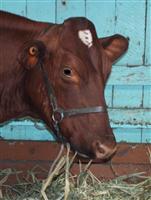
Feed evaluation and ration formulation
Learn the composition of a range of feeds such as pasture, fodder, crops, grasses, cereals, seed and others. This course will give you the skills you need to evaluate feeding and select the right feed for digestibility and nutritional content. This course is very applicable to real life farming situations
Student Comment:
"I think it is absolutely brilliant. I have never come across such a friendly, helpful staff and am so enjoying my course. I will definitely recommend ACS to anybody who wants to study over the net." - T. Sadler